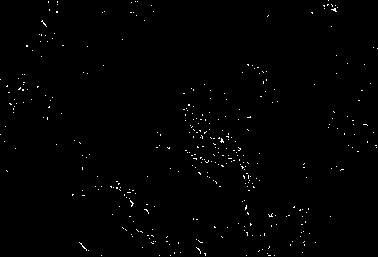A kind of bone repair scaffold and preparation method thereof
A technology of bone repair and bone glue, applied in the fields of processing and manufacturing, medical science, prosthesis, etc., can solve the problems of insufficient bone cell induction performance, inconsistent bone defect shape, tissue irritation, etc., and achieve good bone cell induction activity and good biological phase. Capacitance, the effect of huge specific surface area
- Summary
- Abstract
- Description
- Claims
- Application Information
AI Technical Summary
Problems solved by technology
Method used
Image
Examples
Embodiment 1
[0050] 1. Preparation of autologous bone meal and autologous bone glue
[0051] 1. Put the autogenous bone into a freeze-drying grinder and pulverize it fully to prepare superfine bone powder with a particle size of 30 μm;
[0052] 2. Put the bone meal into a mixed solution containing acetic acid, trypsin, NaCl and Tween 80, stir well, the concentration of acetic acid is 0.3 M, the concentration of trypsin is 50 mg / L, and the concentration of NaCl is 0.5 M. The concentration of Tween 80 is 20 ml / L;
[0053] 3. Put the above mixture into the container and keep stirring during the process;
[0054] 4. Take out the liquid in the container, put it into a freeze-drying box, and freeze-dry to prepare the freeze-dried powder of autologous bone glue;
[0055] 5. Take out the remaining bone meal in the container, and freeze-dry to obtain the autologous bone meal.
[0056] 2. Prepare the scaffold body conforming to the bone defect site by 3D printing
[0057] 1. Mix autologous bone ...
Embodiment 2
[0065] 1. Preparation of autologous bone meal and autologous bone glue
[0066] 1. Put the autogenous bone into a freeze-drying grinder and pulverize it fully to prepare superfine bone powder with a particle size of 5 μm;
[0067] 2. Put the bone meal into a mixed solution containing acetic acid, trypsin, NaCl and Tween 80, stir well, the concentration of acetic acid is 0.1M, the concentration of trypsin is 10mg / L, and the concentration of NaCl is 0.1M, spit out The concentration of Wen 80 is 1ml / L;
[0068] 3. Put the above mixture into the container and keep stirring during the process;
[0069] 4. Take out the liquid in the container, put it into a freeze-drying box, and freeze-dry to prepare the freeze-dried powder of autologous bone glue;
[0070] 5. Take out the remaining bone meal in the container, and freeze-dry to obtain the autologous bone meal.
[0071] 2. Prepare the scaffold body conforming to the bone defect site by 3D printing
[0072] In this embodiment, th...
Embodiment 3
[0077] 1. Preparation of autologous bone meal and autologous bone glue
[0078] 1. Put the autogenous bone into a freeze-drying grinder and pulverize it fully to prepare superfine bone powder with a particle size of 500 μm;
[0079] 2. Put the bone meal into a mixed solution containing acetic acid, trypsin, NaCl and Tween 80, stir well, the concentration of acetic acid is 1M, the concentration of trypsin is 200mg / L, the concentration of NaCl is 1M, Tween 80 The concentration is 50ml / L;
[0080] 3. Put the above mixture into the container and keep stirring during the process;
[0081] 4. Take out the liquid in the container, put it into a freeze-drying box, and freeze-dry to prepare the freeze-dried powder of autologous bone glue;
[0082] 5. Take out the remaining bone meal in the container, and freeze-dry to obtain the autologous bone meal.
[0083] 2. Prepare the scaffold body conforming to the bone defect site by 3D printing
[0084] In this embodiment, the preparation ...
PUM
| Property | Measurement | Unit |
|---|---|---|
| pore size | aaaaa | aaaaa |
| particle diameter | aaaaa | aaaaa |
| concentration | aaaaa | aaaaa |
Abstract
Description
Claims
Application Information
 Login to View More
Login to View More - R&D
- Intellectual Property
- Life Sciences
- Materials
- Tech Scout
- Unparalleled Data Quality
- Higher Quality Content
- 60% Fewer Hallucinations
Browse by: Latest US Patents, China's latest patents, Technical Efficacy Thesaurus, Application Domain, Technology Topic, Popular Technical Reports.
© 2025 PatSnap. All rights reserved.Legal|Privacy policy|Modern Slavery Act Transparency Statement|Sitemap|About US| Contact US: help@patsnap.com



